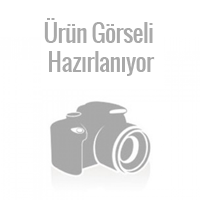 | SIP  |
More control of the telephone assets on the C-Soft console!
The key features listed below give the dispatcher the power to not only patch telephone calls to radio transmissions, but also to manage multiple telephone lines with conferencing, call waiting, and call transferring capability
-
Call Hold – Places the incoming call on hold and then allows it to be picked up or transferred.
-
Call Waiting – If two parties are in a call, one of the participants receives an audible indicator when a call from a third party calls their number.
-
Call Transfer (Blind) – If two parties are in a call, one may transfer the call to a third party without first contacting the third party.
-
Call Transfer with Consultation – If two parties are in a call, one may call a third party and then transfer the call to the third party after announcing that there is a transfer.
-
Call Forwarding – Unconditional, Busy, and Conditional. Unconditional Call Forwarding routes all calls to the phone number to voicemail or another number for any reason. Call Forwarding (Busy) sends a call to another phone number or voicemail in the event the line is busy. Call Forwarding (No Answer) sends the call to another phone number or voicemail in the event that there is no answer (after a pre-defined time).
-
3-Way Call Conferencing – Up to 3 calls can be connected via a conference bridge.
-
Cross Patching Radio PTT (users with SIP calls) – Allows dispatchers to interface radios via SIP to be included in interoperable conferences.
-
Call Conference (up to 5 users) – Allows multiple calls out to others, putting all on hold, then bridging the conference call.
-
Do Not Disturb – Allows all calls to be routed to voicemail.
-
Mic Mute – Allows the microphone to be muted during a call.
-
All SIP call sessions are recorded on the Network Recorder – C-Soft records via echo packets, so the user can configure echo packets in C-Soft Designer.
-
SW Keys (instead of Dongles) – Users have the option to purchase the SW Key, which would use the ADHB-4.The feature is called “ADHB-4 Licensing” because this feature will be used in the future to enable other products. NOTE: while plugged in, the ADHB-4 can act as a license key. Also note that the license codes for the ADHB-4 must be acquired in order to enable this feature. The ADHB-4 can be licensed for the number of C-Soft lines and the number of SIP-enhanced lines.
-
Flash button – Added on the SIP window's keypad page. It functions the same as the Hook Flash button on the main window.
-
Backspace and Clear buttons – Added on the SIP window's keypad page.
-
SIP Call control buttons and window will now display a green “Forward”icon while any type of forwarding mode is active.
The first offering of its kind, Advanced SIP is controlled with a dongle or, for use with an ADHB-4, a soft dongle is available.
|  | |
| |